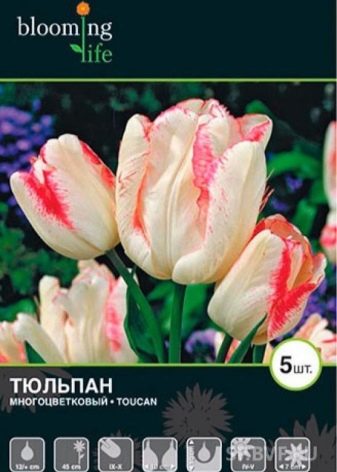Varieties and features of growing pink tulips

A tulip is a flowering bulbous perennial that belongs to the Liliaceae family and is one of the most common in the world. The flower of this herb is in the shape of a glass. The fashion for growing tulips spread from Holland, where they began to cultivate these flowers 500 years ago. Thanks to selection, today there are several tens of thousands of different varieties of tulips, differing in flower shades, petal shape and even size.



Description of the plant
The root system of a tulip is presented in the form of a bulb, shaped like an egg or a pear. Every year the bulbs are renewed - the old generation is replaced by another, new one. During the vegetative period, the plant forms young onions, while those that have faded this year die off. Future peduncles, like the flower itself, are formed gradually throughout the summer. By autumn, young onions finish forming a peduncle and take root in order to give life to new young tulips in the spring. In nature, this cycle repeats from year to year.
The height of the stem of a varietal tulip can reach up to 30 centimeters, but this is not the limit - some varieties also have half-meter flower stalks. The leaves of the tulip are wide, dense, as if enveloping the stem with a veil. In shape, the leaf resembles an oval with an elongation, the tip of the leaf is sharp. A tulip can have up to five leaves on its stem, but there are varieties with two.


As a rule, the tulip blooms as a single flower consisting of six petals, although there are varieties with several flowers growing from a single bulb. Inside the flower there are stamens (there are also six of them) and a pistil with three faces. In structure, the flowers can resemble the shape of a glass, a lily, a bowl, an egg. You can often find a variety in which the petals are double and multiple. The color of tulips is varied, but the most common are pink tulips, white-pink, white, red, yellow, purple, orange. This herbaceous perennial bloom begins in April and ends in June.


Varieties
"Columbus"
This decorative tulip variety is prized for the color of its flower - rich pink petals have a white edging at the tips. His petals are terry. The opened bud turns into a beautiful flower, reaching up to 10 centimeters in diameter. The flowering period at Columbus starts early, back in April, so this variety is called early. The opened tulip flowers will delight you with their beauty for two weeks. Grows "Columbus" up to 38-40 centimeters. The plant looks very beautiful if planted in the foreground of a flower bed or border.
In order to grow Columbus, the bulbs are planted in the autumn. It is best to do this in the second decade of September and before the first decade of October. The bulbs are buried in the soil by 15–20 centimeters, while the distance between each flower must be kept within the range from 10 to 20 centimeters.
Every five years, you need to look for a new planting site for the bulbs: this will help protect the plant from diseases and preserve its decorative properties.


"Toucan"
An unusual white-pink variety of this tulip is referred to as a multi-flowered one. This means that from one bulb you can get several peduncles. The flowers look like a glass, and the petals are white, with pink inclusions along the side edges."Toucan" blooms in May, its flowering lasts two, and sometimes three weeks. This is a large tulip: it grows up to 45 centimeters in height. It grows at an average speed and is good both for decorating a flower bed and in cut form for a bouquet. The plant feels equally well in bright light and in partial shade.
A tulip is planted before winter in the fall - from September to mid-October. Planting depth - up to 20 centimeters, the distance between the bulbs must be at least 10 centimeters. After flowering, the bulbs are dug up annually, and once every 4–5 years, the planting site is changed.


"Angelica"
This is a double and late tulip cultivar. His appearance is unusual - if you have never met him, you will not immediately understand that it is a tulip in front of you. Anzhelika tulip looks like a small peony with soft pink double petals. Its flowering period begins in May. It grows at an average speed and reaches a height of up to 40 centimeters. A fully opened flower is up to 9 centimeters in diameter. "Angelica" looks very beautiful as a single plant, and also a bouquet of amazing beauty is obtained from it.
Landscape designers recommend this tulip variety for flower beds, borders, alpine slide decoration, as well as for planting in flowerpots to decorate the terrace.
To cover an area of 1 square meter with flowers, 45-50 bulbs are required, which are planted in the fall (from September to October).


"Foxtrot"
It is an early double-flowered tulip that blooms in late April or early May. This flowering perennial is quite tall: it grows up to 45 centimeters. Its flower is shaped like a large glass of pleasant pink shade. The petals are multiple, in the center of each petal there are white broad strokes. The blossoming bud is up to 10 centimeters in diameter, and the height of each petal is 8-9 centimeters, the fully opened flower looks like a variegated ball.
Blooming "Foxtrot" has another advantage - it smells very fragrant. Flowering lasts up to two weeks. The flower has 5 leaves on the stem, they are dark green in color, dense and fleshy. The plant looks good both in a flower bed and in a bouquet. The most advantageous "Foxtrot" looks next to white hyacinths, as well as against the background of evergreen bushes.


Growing conditions
Tulips are very light-loving plants, so you need to choose a well-lit place for planting them. It is better if the light is slightly diffused. This can be achieved if trees, bushes or other plants, taller than a tulip, grow nearby. The place for growing should not be located in the wind: a draft and gusty wind are contraindicated for this fragile handsome man.
The soil for a perennial needs light, loose, but at the same time quite nutritious. Tulips do not do well in acidic substrates - a slightly alkaline environment is best for them. The soil should be fertilized long before tulips are planted - these plants do not tolerate feeding from fresh organic components.
You can fertilize by introducing phosphorus-potassium and nitrogen complexes. The soil near the plants must be constantly loosened and weeded from weeds.


A perennial does not tolerate stagnant water in the soil, so the surface where this flower will grow should be flat, with good drainage. Do not plant bulbs in places where groundwater is close. In the spring, when the bulbs start to grow, the soil should be moderately moistened, not allowing it to dry out. The plant does not need frequent watering before budding appears; the transition to daily watering can be performed only at the stage of mature buds. When watering, it is important to ensure that moisture does not get on the leaves. It is best to pour water between the landing rows. This should be done early in the morning or in the evening when the sun is inactive.The flower does not like cold water, so you need to defend it in advance and warm it with the rays of the sun.

After the plant has finished its flowering period and the flower head has drooped, it must be cut off. In this case, the perennial bulb does not need to be dug out of the soil. Now the plant will direct all its forces in order to form a new generation of young onions, so that in the spring you and I will again see the flowering of these delicate and beautiful flowers. So the tulip completes its life cycle, intended for this plant by nature itself.

You will learn about forcing tulips in the following video.







































































































The comment was sent successfully.